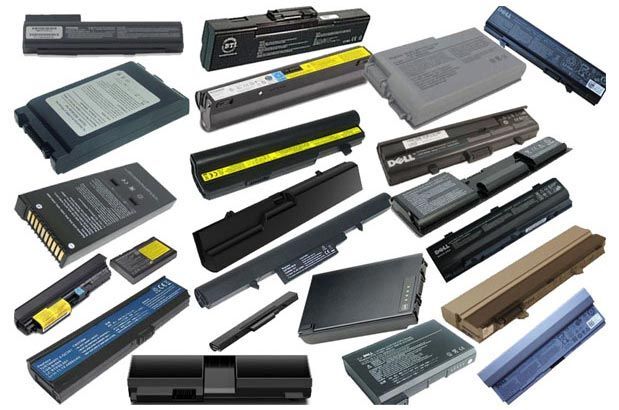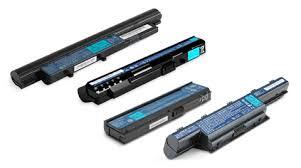Laptops have become an essential part of our daily lives, whether for work, study, or entertainment. A crucial component that determines their portability and usability is the laptop battery. Understanding how to maintain, replace, and optimize your battery can significantly improve your laptop's lifespan and performance. In this comprehensive guide, we’ll explore everything you need to know about laptop batteries.
1. Understanding Laptop Batteries
1. Understanding Laptop Batteries
What is a Laptop Battery?
A laptop battery is a rechargeable power source that enables a laptop to function without being plugged into an electrical outlet. It supplies energy to various components, ensuring smooth operation even when you're on the move.
Types of Laptop Batteries
Types of Laptop Batteries
Laptop batteries come in different types based on their chemical composition:
Lithium-Ion (Li-Ion) Batteries
Most common in modern laptops
Lightweight and energy-dense
No memory effect, meaning they don’t need full discharge before recharging
Lithium-Polymer (Li-Po) Batteries
Advanced version of Li-Ion batteries
Thinner and lighter
Higher durability and flexibility in shape
Nickel-Cadmium (NiCd) Batteries (Obsolete)
Heavier and bulkier
Prone to memory effect, reducing battery capacity over time
Nickel-Metal Hydride (NiMH) Batteries
Better than NiCd but still outdated
Higher energy density but less efficient compared to Li-Ion
2. Factors Affecting Laptop Battery Life
2. Factors Affecting Laptop Battery Life
Several factors influence how long your laptop battery lasts:
Battery Age: Over time, batteries lose capacity due to chemical degradation.
Usage Patterns: Frequent charging and discharging can wear out the battery faster.
Temperature: Extreme heat or cold affects battery efficiency and longevity.
Background Processes: Running heavy applications drains battery life quickly.
Display Brightness: Higher brightness settings consume more power.
3. How to Check Your Laptop Battery Health
3. How to Check Your Laptop Battery Health
Monitoring your laptop’s battery health ensures you take necessary steps before it completely fails. Here’s how you can check it:
Windows Users:
Open Command Prompt (cmd) as administrator.
Type:
powercfg /batteryreportLocate and open the generated report to analyze battery capacity and performance.
Mac Users:
Click on the Apple logo > About This Mac.
Select System Report > Power.
Check the Cycle Count and Battery Condition.
4. How to Extend Laptop Battery Life
4. How to Extend Laptop Battery Life
Improving your laptop battery’s lifespan can help you avoid frequent replacements. Here are some effective tips:
1. Optimize Power Settings
Use Battery Saver Mode (Windows) or Energy Saver Mode (Mac).
Lower screen brightness.
Turn off Bluetooth and Wi-Fi when not in use.
2. Avoid Extreme Temperatures
Keep your laptop at room temperature (20-25°C).
Avoid using it on soft surfaces like beds, which block airflow and cause overheating.
3. Limit Background Applications
Close unnecessary applications running in the background.
Disable auto startup programs that consume power.
4. Proper Charging Practices
Don’t let the battery drain completely before recharging.
Avoid overcharging; unplug when fully charged.
Use original or certified chargers for safety.
5. How to Replace a Laptop Battery
If your battery no longer holds a charge, replacing it is the best solution. Follow these steps:
Step 1: Identify Your Battery Model
Check the bottom of your laptop or go to the manufacturer’s website for specifications.
Step 2: Purchase a Compatible Battery
Buy from a reliable source (official brand stores, Amazon, Newegg, etc.).
Ensure it matches your laptop's model number.
Step 3: Remove the Old Battery
For removable batteries: Slide the latch, remove the battery, and insert the new one.
For built-in batteries: Unscrew the bottom panel, carefully disconnect the battery, and replace it.
6. Buying Guide: How to Choose the Best Laptop Battery
6. Buying Guide: How to Choose the Best Laptop Battery
When buying a new laptop battery, consider the following:
1. Compatibility
Ensure the battery is compatible with your laptop model.
2. Capacity (mAh or Wh)
Higher mAh (milliampere-hour) or Wh (watt-hour) ratings indicate longer battery life.
3. Brand & Quality
Choose OEM (Original Equipment Manufacturer) or trusted third-party brands.best brands like hp, dell, apple, asus, lenovo
4. Warranty & Certifications
Look for at least 6-12 months warranty.
Check for safety certifications like CE, UL, or FCC.
7. Frequently Asked Questions (FAQs)
7. Frequently Asked Questions (FAQs)
1. How long does a laptop battery last?
On average, a laptop battery lasts 2-4 years or 300-500 charge cycles before requiring replacement.
2. Can I use my laptop while charging?
Yes, but it’s recommended to unplug it once fully charged to prevent overheating.
3. Why is my laptop battery draining fast?
High brightness settings
Too many background apps
Old battery nearing the end of its lifespan
4. Can I replace my laptop battery myself?
Yes, if it’s a removable battery. For built-in batteries, professional help may be required.
Conclusion
Conclusion
A laptop battery is a crucial component that directly affects your device’s performance and portability. By understanding the different types, maintaining good charging habits, and replacing your battery when needed, you can extend your laptop’s lifespan significantly. Whether you're looking to optimize battery life, buy a replacement, or troubleshoot issues, following these guidelines will ensure you get the best performance out of your laptop battery.


